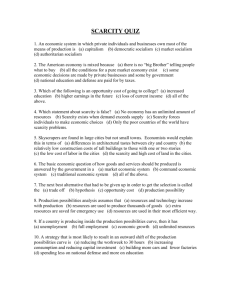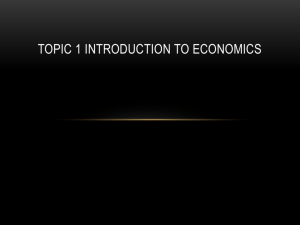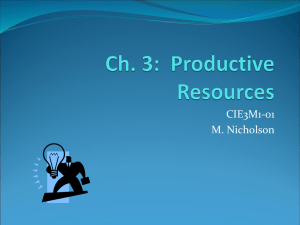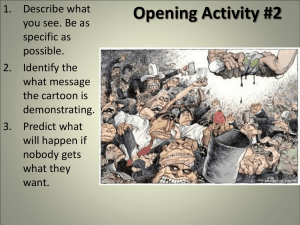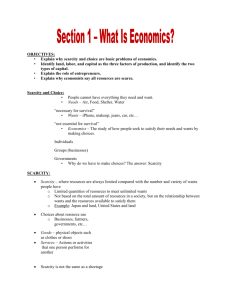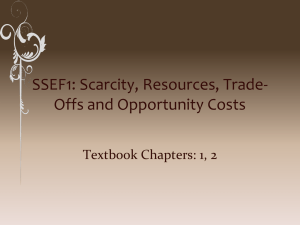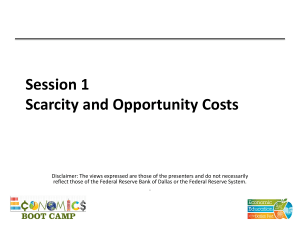Chapter 1 What Is Economics?
advertisement
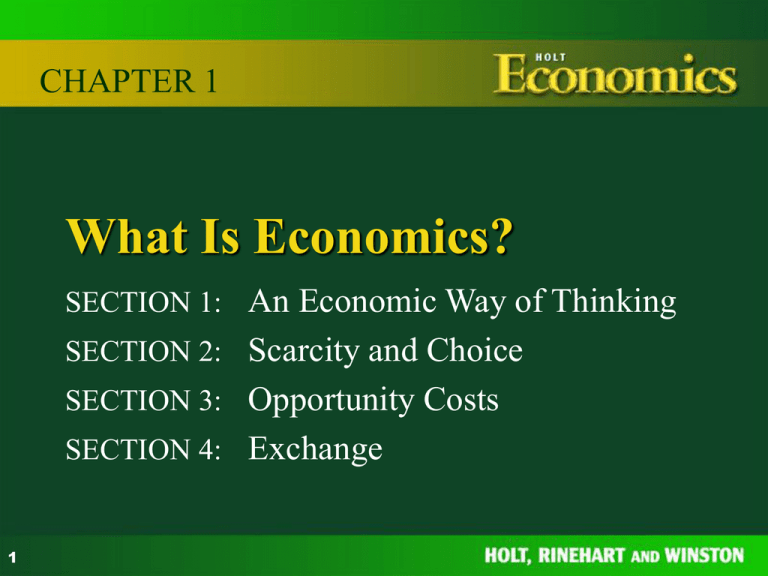
CHAPTER 1 What Is Economics? SECTION 1: An Economic Way of Thinking SECTION 2: Scarcity and Choice SECTION 3: Opportunity Costs SECTION 4: Exchange 1 SECTION 1 An Economic Way of Thinking Objectives: What is economics? What are the factors of production? What is the goal of entrepreneurship? 2 SECTION 1 An Economic Way of Thinking Economics Economics is the study of the choices that people make to satisfy their wants and needs. 3 SECTION 1 An Economic Way of Thinking Factors of Production: 4 natural resources human resources capital resources entrepreneurship SECTION 1 An Economic Way of Thinking The goal of entrepreneurship The goal of entrepreneurship is to create a good or service of value by developing a new combination of the other factors of production. 5 SECTION 2 Scarcity and Choice Objectives: Why is scarcity a basic problem of economics? What issues must producers address to distribute resources? Why do producers study productivity? 6 SECTION 2 Scarcity and Choice Scarcity forces people to decide how to use resources effectively. 7 SECTION 2 Scarcity and Choice Questions producers must address to distribute resources: what to produce how to produce for whom to produce 8 SECTION 2 Scarcity and Choice Producers study productivity to determine if resources are being used wisely. 9 SECTION 3 Opportunity Costs Objectives: Why is sacrifice an important element of economic choice? What assumptions are involved in creating a production possibilities curve? Why might future production possibilities differ from current production possibilities? 10 SECTION 3 Opportunity Costs Reasons sacrifice is an important element of economic choice: forces people to make trade-offs results in opportunity costs 11 SECTION 3 Opportunity Costs Assumptions involved in creating a production possibilities curve: that the amount of available resources and technology will not change during the time being studied that all the resources being used are utilized as efficiently as possible 12 SECTION 3 Opportunity Costs Reasons future production possibilities might differ from current production possibilities: changes in technology changes in the factors of production 13 SECTION 4 Exchange Objectives: What are the difficulties associated with barter? Why is true self-sufficiency rare? What are the economic benefits of interdependence? 14 SECTION 4 Exchange Difficulties associated with bartering: relies on bargaining results in complicated transactions 15 SECTION 4 Exchange Why true self-sufficiency is rare: requires a large supply of tools, equipment, and raw materials demands extensive skills and knowledge in a variety of fields 16 SECTION 4 Exchange The economic benefits of interdependence: does not require countries to produce all goods they consume allows countries to specialize in the production of certain goods while trading others 17 CHAPTER 1 Wrap-Up 1. What is the difference between microeconomics and macroeconomics? 2. Why is scarcity important in economics? 3. What three production issues must an economic system address? 4. How can division of labor and specialization increase productivity? 5. Identify the assumptions on which the production possibilities curve is based. 6. Describe the benefits of interdependence. 18

